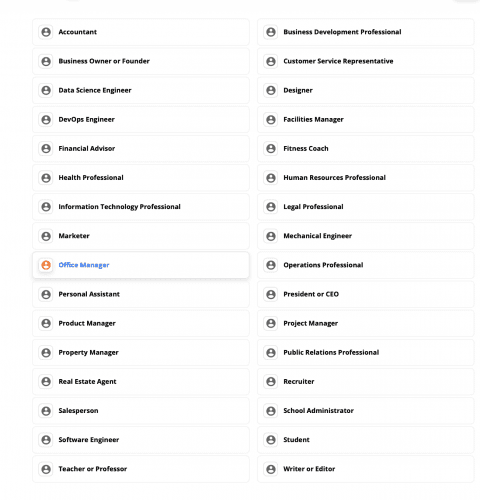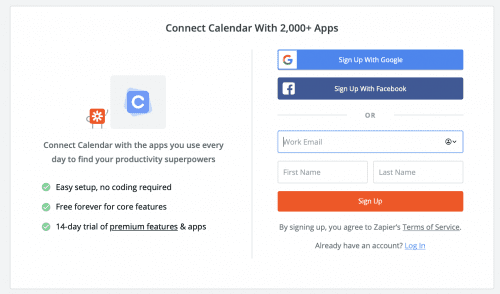Work-from-home opportunities don’t pay you to hang at home, but they get pretty close. Between emails, you can raid the fridge, throw a pizza in the oven, or even help your kids with their homework.
But, like most things in life, work-from-home opportunities are not one-size-fits-all. Everyone has their own aptitudes and preferences. Know yourself, and then know your options.
What are the Best Work-From-Home Gigs?
The good news is, there’s a work-from-home opportunity out there for every lifestyle. Take a look at the list below to find one that fits yours.
Best work-from-home opportunity for single moms: Zirtual
Single moms can do it all, which is why they make great virtual assistants. Between managing their kids’ appointments, shuttling them around, and helping them with homework, single moms are already accustomed to doing most of the tasks VAs do.
Working for Zirtual doesn’t require a lot of qualifications, either. As long as you’re college-educated, based in the U.S., and have an internet connection, go ahead and apply.
Zirtual provides on-the-job training, and most of its team members make $12-$16 per hour. Zirtual VAs work for Fortune 500 companies, investors, and mom-and-pop shops.
Best work-from-home opportunity for passive income: Airbnb
If you want to make some extra money and have a space to rent out at home, why not list it on Airbnb? Airbnb hosts make nearly $1,000 per month, on average, simply for giving people a place to stay.
Sure, being an Airbnb host means keeping the rental space clean and tidy. But if you’re already on top of your household chores, it’s not a lot of extra work. Plus, you’ll get to meet people from all around the world in the comfort of your own home.
Best work-from-home opportunity for artsy types: 99Designs
If you know your way around graphic design software, 99Designs can be a lucrative work-from-home opportunity. There are two ways to do it: Either you can compete with other members of the 99Designs community on design challenges, or you can work directly with clients.
Our advice? Start with competitions. There’s no commitment, and you can choose projects that inspire you. Realize that you’ll probably need to enter a few before you start winning them.
Once you’ve won a few contests, brand representatives will begin to reach out to you directly. You can also bring your own clients to the platform, which makes it easy to save and share your work.
Best work-from-home opportunity for recent grads: Tutor.com
It’s hard out there for recent grads. If you’re not sure how to put your education to use but would prefer to work from home, check out Tutor.com. Whether your background is in math, science, history, or some other discipline, you’ll find students in need of support.
Affiliated with the Princeton Review, Tutor.com lets you work as few as 5 hours per week or as many as 29. Plus, you can pick up unscheduled sessions in your spare time.
Why can’t you set up your own tutoring service? You could, but finding clients can be a pain. And once you do, you may have to spend hours tracking down payments. Tutoring on an established platform avoids both time-sucks.
Best work-from-home opportunity for aspiring entrepreneurs: Nu Skin
Opportunity platform Nu Skin makes it easy to become an entrepreneur. Nu Skin’s independent brand affiliates sell skincare products directly to consumers in nearly 50 markets. As they build teams, they also have the potential to earn commissions on the products which their team members sell to consumers, which encourages them to mentor the newcomers in their group.
Like other entrepreneurs, Nu Skin’s brand affiliates are responsible for their own expenses, but a unique leg up they have is that they have products that are tried, tested, and supported by a reputable company. Brand affiliates can set their own hours, manage their own teams, and they have the resources and tools to grow their businesses. This helps them be able to have some of the benefits of the gig economy, but have the potential to do more. Brand affiliates engage with customers remotely through social media, in-person meetings, and other platforms.
Best work-from-home opportunity for full-time hours: Amazon
In a lot of cases, work-from-home opportunities offer part-time or inconsistent hours. If you want a full-time job you can do from your couch, check out Amazon. Positions range from sales to software development to customer service.
Because positions range widely, however, so do salaries and benefits. Know your worth, and remember that you can always cobble together a full-time gig from two or more part-time ones.
Best work-from-home opportunity for writers: Verblio
Can you turn a phrase on a dime? Check out Verblio, an online freelance writing platform. Verblio writers pen a range of content, from 300-word blog posts to website copy to e-books. Editing opportunities come up on occasion.
If you want to work for Verblio, you’ll need to have great grammar, research, and content marketing skills. You’ll get to choose industries that align with your expertise, ranging from healthcare to cannabis to real estate.
Best work-from-home opportunity for social butterflies: Arise
Arise’s remote customer service representatives provide support for big-name companies, including Intuit and Airbnb. Earning up to $14 per hour, Arise workers choose their hours and need nothing more than a phone and a quiet space at home.
One plus of this work-from-home opportunity? You’ll never get lonely. The work is a matter of answering questions, triaging support needs, and helping clients deliver exceptional customer experience.
Best work-from-home opportunity for fashionistas: Stella and Dot
Do you want to have a future in fashion, but you can’t pick up stakes for a place like New York City? Stella and Dot’s work-from-home opportunities are second to none.
In a nutshell, Stella and Dot stylists get paid to share and wear jewelry. Many of them sell on social media, while others put on “trunk shows” — which are essentially Tupperware parties for the fashion world.
With that said, Stella and Dot is also a good way to earn some income on the side: More than eight in 10 of them actually hold full- or part-time jobs elsewhere.
Best work-from-home opportunity for multilingual people: Gengo
Are you fluent in two or more languages? Apply to work at Gengo. Gengo is a language translation service that serves Amazon, YouTube, The New York Times, and even the U.S. government agencies.
The company has more than 21,000 translators across all major time zones, covering more than 70 language pairs. Gengo translators earn an average of $417 per month, but income varies depending on customer demand, hours worked, and job availability.
Best work-from-home opportunity for English buffs: VIPkid
If you’re a “word nerd” or love to read, VIPkid has the perfect work-from-home opportunity for you: English tutoring. VIPkid students are primarily Chinese, but because it’s an immersive program, tutors don’t need to be able to speak the language.
Although VIPkid does require a six-month commitment, the pay is good. Tutors earn between $15 and $22 per hour, depending on their prior experience and hours worked. Tutors must be authorized to work in the U.S. or Canada and need a bachelor’s degree, but all majors are accepted.
Best work-from-home opportunity for role-agnostics: Kelly Services
What if you’re a multi-talented person who’ll take pretty much any work-from-home opportunity, so long as the pay is right? Kelly Services is an employment agency that focuses on remote work.
Founded back in 1946, Kelly Services employs almost 440,000 workers. It fills positions in an enormous range of industries, from accounting to automotive to IT to life sciences. Kelly Services fills temporary positions, as well as part- and full-time ones.
Best work-from-home opportunity for healthcare experts: United Healthcare
Although a lot of healthcare jobs must be done in person, a surprising number of them can be accomplished remotely. United Healthcare offers hundreds of work-from-home opportunities, ranging from customer service to clinical care to medical billing.
One of the world’s largest healthcare companies, United Healthcare employs nearly a quarter-million people across all 50 states. Plus, positions in the healthcare industry tend to pay handsomely.
Best work-from-home opportunity for home-decor junkies: Williams-Sonoma
Does a beautifully decorated room make you swoon? Consider work-from-home opportunities with Williams-Sonoma. The California-based retailer sells everything from bakeware to wreaths to barbeque grills.
Most of the remote-work opportunities with Williams-Sonoma are customer service positions. The perks and pay are good, though: Agents start at $12 per hour, with three weeks of paid training from home. They also get a 40% discount on most Williams-Sonoma products.
Best work-from-home opportunity for tech gurus: Dell
If you’re happy to spend all day writing code or troubleshooting consumer tech, a work-from-home opportunity with Dell might be right for you. Dell has team members in more than 15 countries and is consistently named a “best place to work.”
Although most people know Dell as a computer brand, it’s actually a do-it-all tech company. Partnerships with companies like SecureWorks enable Dell workers to get their feet wet in cybersecurity, a notoriously in-demand field.
Best work-from-home opportunity for travel fanatics: Dream Vacations
If you’d like to either be at home or on an adventure, Dream Vacations has work-from-home opportunities you might want to check out. As a franchisee, you get the flexibility of working from home — or on whatever beach you might be enjoying at the time — with the credibility of a brand.
Beware, though, that work as a travel agent is fast-paced. Not only do franchisees need to develop their own client relationships, but they also have to manage bookings and handle billing. To make it a little easier, Dream Vacations provides online training modules and social media support.
Best work-from-home opportunity for tax experts: Intuit TurboTax
If you’re a certified public accountant or enrolled agent, consider a remote tax preparation role with Intuit’s TurboTax division. Intuit welcomes tax experts at all levels of their career, but experience with tax-prep software is a must. Bilingualism is a plus.
One plus of this work-from-home opportunity? Overtime pay around peak times. Because tax preparation is a seasonal industry, home-based tax preparers can make a pretty penny around quarterly tax filing deadlines.
Work-from-home opportunities have never been more plentiful. But as is true of in-person opportunities, you shouldn’t take a position simply because it’s open.
Check out the company, talk to other members of the team, and find the right fit: Yours is out there, and the best part is, you don’t even have to leave your home to find it.














